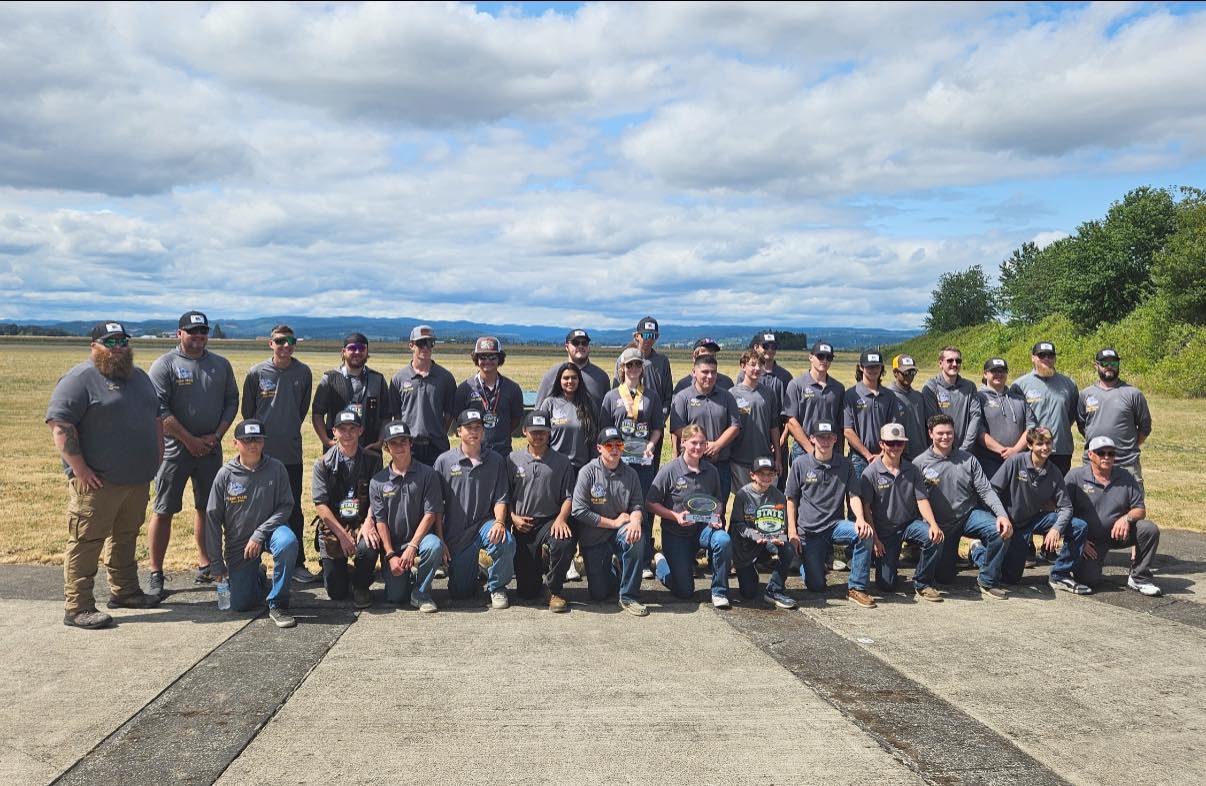Legislation will reduce state fire protection rates for landowners in Baker County, across Oregon
Published 9:39 am Friday, June 27, 2025

- A helicopter dumps retardant on a fire. (Rachael Pope/Douglas Forest Protective Association)
A bill that is headed to Gov. Tina Kotek’s desk will reduce wildfire protection rates that landowners across Oregon pay to the state, reversing a trend of annual increases that have cost some larger landowners thousands of dollars per year.
The Senate passed House Bill 3940 by a 20-8 vote on Thursday, June 26.
The House approved the bill 37-8 on June 23.
“It’s pretty exciting,” Mark Bennett, a rancher in southern Baker County, said on Friday morning, June 27.
Matt McElligott, a Baker County rancher and president of the Oregon Cattlemen’s Association, agreed.
“This bill is a step in the right direction,” McElligott said Friday morning. “It makes (fire protection funding) a heck of a lot more equitable.”
Bennett and McElligott were both members of a task force that worked on the issue.
Bennett, a longtime county commissioner who retired in 2022, served as chairman of the state Wildfire Programs Advisory Council until 2024, when the governor appointed him to the Land Conservation and Development Commission.
Thousands of property owners across the state pay an annual fee, through their property taxes, to ensure the Oregon Department of Forestry will fight wildfires on their land.
The rates are per acre and vary depending on where the land is, and whether it is rangeland or forest.
Bennett said rate increases for the Northeast Oregon district have averaged around 40% over the past few years.
McElligott said annual rate hikes for individual property owners have ranged from 20% to 50%.
That was due in part to another piece of legislation, Senate Bill 762, passed in 2021. That bill was designed to bolster the state’s firefighting capacity in the wake of the devastating wildfires in western and southern Oregon over the Labor Day weekend in 2020.
That was an expensive proposition, though, boosting the firefighting budget by tens of millions of dollars. Bennett said landowners were saddled with a significant part of the increase through higher protection rates.
House Bill 3940 will trim those rates over the next three years, Bennett and McElligott said.
The amounts haven’t been determined, Joy Krawczyk, public affairs director for the Department of Forestry, said on Friday morning.
Krawczyk said the agency has to submit proposed fire protection rates for 2026 to Oregon’s 36 counties by early July. Those rates will be added to landowners’ property tax bills sent this fall.
To offset the reductions in protection rates, HB 3940 imposes a tax on nicotine pouches, with the money going to the state’s wildfire budget, as well as 20% of the interest from the state’s $1.9 billion Rainy Day Fund.
Effects of higher protection rates
Pat Sullivan, a cattle rancher in the Burnt River Valley south of Baker City, said House Bill is “very good for landowners.”
Sullivan said rate increases over the past few years have in some cases boosted the cost per acre to nearly equal to the land’s value for grazing.
Sullivan said the bill for his property, which is primarily rangeland, has increased by around $1,100 per year.
Sullivan said he’s also been concerned that the bigger bills for state fire protection will discourage property owners from donating to their local fire protection district.
It’s a major worry for Sullivan, who is chief of the Burnt River Rural Fire Protection Association, which responds to fires, as well as medical emergencies, in a 532-square-mile district.
He said he fears that landowners who are “dual-protected” — meaning both the forestry department and a local fire district will fight fires on their property — would stop contributing to the local district because their state fee is so high.
Although some rural fire districts have property tax levies, others, including Burnt River, do not, depending on voluntary payments from property owners, Sullivan said.






